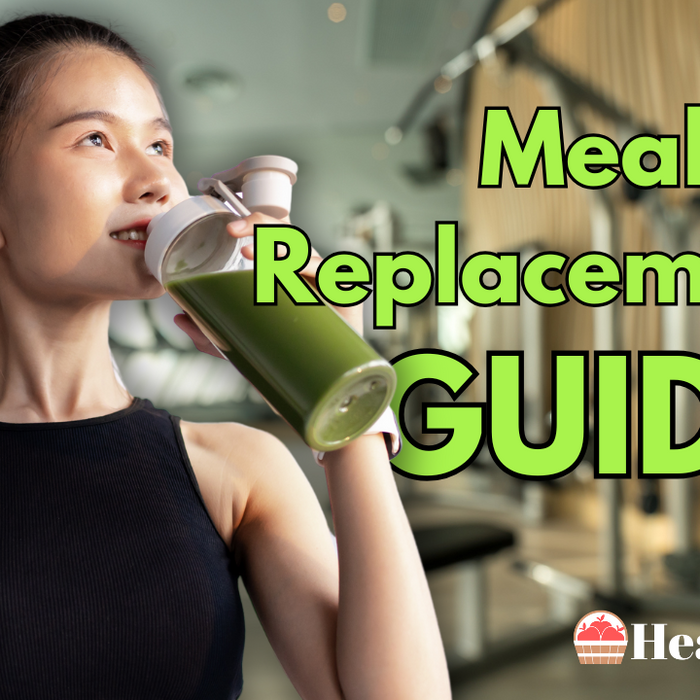

Medicine Cabinet: Guide
Key Takeaways
- Stock Essential Medications: Keep a variety of over-the-counter medications, first-aid items, and digestive aids to address common health issues and emergencies.
- Organize for Efficiency: Group items by category, use clear containers, and store frequently used items in easily accessible areas.
- Store Medications Safely: Use lockable cabinets and childproof containers to prevent accidental misuse by children or pets.
- Dispose of Medications Responsibly: Utilize pharmacy take-back programs or follow safe at-home disposal methods to protect the environment and avoid accidental ingestion.
- Consult Professionals When Needed: Seek advice from healthcare providers to manage prescriptions, avoid drug interactions, and address persistent health concerns effectively.
A well-stocked and organized medicine cabinet is more than just a household convenience—it's an essential part of staying prepared for everyday health needs and emergencies. Research shows that over half of households have at least one expired or improperly stored medication at home. This common oversight can lead to inefficiency, health risks, and unnecessary stress during critical moments.
At Health Orchard, we understand the importance of maintaining a practical and safe medicine cabinet. This guide outlines everything you need to know, from must-have essentials to storage tips and safety precautions that will help ensure your family's health supplies remain effective and accessible when needed most.

Essentials For Your Medicine Cabinet
A well-organized medicine cabinet serves as your first line of defense against common health issues and minor emergencies. Beyond just storing medications, it should be thoughtfully stocked with a comprehensive selection of items that can address a wide range of health needs for every member of your household. Consider factors like the ages of family members, any chronic conditions, and seasonal health challenges when selecting essential items. A properly stocked medicine cabinet can help you respond quickly to health issues, potentially preventing minor problems from becoming more serious ones.
Research has shown that many households are often missing critical items when they need them most, leading to unnecessary urgent care visits or late-night pharmacy runs. By planning ahead and maintaining a complete set of essential supplies, you can handle common health situations confidently and effectively. Regular inventory checks and proper organization will ensure your supplies remain accessible and ready for use when needed.
Over-The-Counter Medications
Over-the-counter medications form the cornerstone of home healthcare, providing relief for many common ailments without requiring a prescription. When selecting OTC medications, it's crucial to understand their different purposes and proper usage guidelines. Pain relievers like acetaminophen, ibuprofen, and aspirin each serve different functions - acetaminophen primarily reduces fever and pain, while ibuprofen and aspirin also address inflammation. Antihistamines come in both drowsy and non-drowsy formulations, making it important to stock both types for different situations. Additionally, keeping both rapid-acting and long-lasting formulations of certain medications can provide more flexible treatment options.
Your OTC medication collection should also include specialized items based on your family's specific needs. For households with children, it's essential to stock age-appropriate formulations and dosing devices. Digestive aids should include both preventive and reactive treatments - from fiber supplements to antacids and anti-diarrheal medications. When selecting medications, pay attention to active ingredients to avoid duplicating treatments and consider potential drug interactions, especially if family members take prescription medications. Always store medications in their original containers with intact labels and keep a written log of expiration dates to ensure safety and effectiveness.
First-Aid Essentials
First-aid items should be the cornerstone of your medicine cabinet. Essential supplies include:
- Wound Care Items: A complete wound care kit should include various sizes of sterile bandages, gauze pads, and medical tape for treating cuts and abrasions effectively. Antiseptic wipes and hydrogen peroxide are crucial for proper wound cleaning and preventing infection.
- Skin Treatments: Keep both 1% hydrocortisone cream for allergic reactions and triple antibiotic ointment for preventing infection in minor wounds. These topical treatments should be stored in their original containers and checked regularly for expiration dates.
- Thermometer: A digital thermometer with fresh batteries ensures accurate temperature readings during illness or injury assessment. Having a backup thermometer is recommended, as these devices can malfunction at crucial moments.
Tools and Equipment
To ensure readiness in various situations, include:
- Scissors and Tweezers: Medical-grade scissors should be dedicated solely to first aid use and kept clean and sharp for precise bandage cutting. Sterile tweezers are essential for splinter removal and should be sanitized after each use.
- Disposable Gloves: Keep multiple pairs of latex-free nitrile gloves in various sizes to protect both caregiver and patient during wound care. Using fresh gloves for each treatment prevents cross-contamination and reduces infection risk.
- Emergency Contacts: Maintain a current list of medical providers, emergency services, and poison control numbers in both digital and printed formats. Include allergies, medications, and medical conditions for each family member on this list.
Organizing Your Medicine Cabinet
Sorting By Categories
Efficient organization saves time and reduces stress during emergencies. Group items into categories such as:
- Pain and fever relief: Store common pain relievers like acetaminophen and ibuprofen together, clearly labeled with dosage instructions and expiration dates. Having both adult and children's formulations separated prevents confusion during urgent situations.
- Cold, flu, and allergy medications: Keep daytime and nighttime formulas separate to prevent accidental misuse while ensuring easy access. Store similar medications together with clear labels indicating their specific uses and any warnings about combinations.
- First-aid items and tools: Organize supplies in clear, waterproof containers that protect items while allowing quick visual identification during emergencies. Create separate compartments for frequently used items versus emergency supplies to maintain organization.
Storage Tips
Proper storage ensures the longevity and effectiveness of your supplies:
- Cool and Dry Environment: Medicine cabinets should be located in areas maintaining temperatures between 68-77°F (20-25°C) to preserve medication efficacy. Bathroom storage should be avoided as humidity and temperature fluctuations can degrade medications more quickly.
- Clear Bins: Use transparent, stackable containers with secure lids to protect contents while maintaining visibility. Label each container clearly with contents and expiration dates for quick reference.
- Accessibility: Position most-used items at eye level and arrange heavier items on lower shelves to prevent accidents. Create a logical flow where similar items are grouped together and emergency supplies are easily accessible.
Regular Maintenance
A well-maintained medicine cabinet requires routine checks:
- Inspect Expiration Dates: Check medications and first aid supplies every six months, disposing of expired items through proper medication take-back programs. Document expiration dates in a tracking system to proactively replace items before they expire.
- Replenish Supplies: Monitor usage patterns and maintain an inventory list to ensure essential items are replaced before running out. Keep a backup supply of frequently used items and seasonal medications to avoid emergency shopping trips.
- Check Labels: Review all medication labels annually for legibility and update any handwritten labels that have become difficult to read. Create a standardized labeling system that includes essential information like dosage, warnings, and expiration dates.
Safety and Precautions
Proper Storage to Avoid Misuse
Proper storage of medications is essential to prevent accidental misuse, especially in households with children or pets. Medications should always be stored in a secure, lockable cabinet or a high, out-of-reach location. Cabinets with childproof locks add an extra layer of safety, particularly for homes with young children. Even items that seem harmless, such as vitamins or cough syrups, can pose significant risks if ingested in large quantities. Storing items in their original containers with clear labels also reduces the likelihood of confusion or accidental misuse, ensuring that dosages and instructions remain accessible.
In addition to physical safety measures, environmental considerations are also important. Medications should be kept in a cool, dry area to preserve their potency. The bathroom, often the most convenient location, is not ideal due to humidity and temperature fluctuations that can degrade medications. Storing medicines in airtight containers within a cabinet outside the bathroom can help maintain their effectiveness over time. Taking these precautions minimizes the risks of accidental ingestion and ensures that your medications remain safe and effective when needed.
Handling and Disposal of Medications
Improper disposal of medications can have serious consequences for both human safety and the environment. Flushing medications down the toilet or sink is generally discouraged, as many pharmaceuticals are not removed by water treatment systems and can end up contaminating water supplies. Exceptions to this rule exist, but only for specific medications that the manufacturer or healthcare provider explicitly recommends for flushing. Checking disposal instructions on the medication’s label or accompanying information is a good practice.
Community take-back programs or pharmacy-based disposal services are the best options for safely discarding unused or expired medications. These programs ensure that medications are disposed of in a way that minimizes environmental impact and prevents them from being accessed by others. If no take-back program is available, a safe at-home disposal method is to seal the medication in a plastic bag with an unpalatable substance like coffee grounds or cat litter before throwing it in the trash. This approach deters accidental ingestion by children, pets, or wildlife while protecting the environment.
Knowing When to Seek Professional Advice
Understanding when to consult a healthcare professional is a crucial aspect of medication safety. Pharmacists and doctors can provide valuable insights into managing prescription medications, ensuring you adhere to correct dosages, and avoiding potentially harmful drug interactions. For example, combining certain over-the-counter medications with prescription drugs can lead to serious side effects. Consulting a professional can help you navigate these complexities and make informed decisions about your health.
Additionally, persistent symptoms or conditions that do not respond to over-the-counter treatments warrant professional evaluation. Issues such as recurring headaches, prolonged digestive discomfort, or unrelieved allergy symptoms could indicate underlying conditions requiring medical intervention. Healthcare professionals can also clarify dosage instructions or suggest alternative treatments tailored to your specific needs. Taking the time to seek expert guidance enhances safety and ensures you’re using medications as effectively as possible.
Conclusion
Taking control of your household's health starts with a functional and safe medicine cabinet. By incorporating essential items, organizing supplies effectively, and following proper safety measures, you can ensure your family is prepared for minor health issues and emergencies that may arise at home. A well-stocked and properly maintained medicine cabinet provides peace of mind and immediate access to necessary supplies when you need them most.
Health Orchard empowers you to make informed choices with our trusted resources and affordable solutions for all your health needs. Our convenient price comparison feature helps you find the best deals across major retailers like Walmart and Amazon, saving you both time and money. Visit us today to explore our comprehensive selection of first-aid supplies, OTC medications, and organizational tools to build your ideal medicine cabinet and stay prepared for life's health challenges.
Frequently Asked Questions about Medicine Cabinet
1. What is in a medicine cabinet?
A well-stocked medicine cabinet typically contains first-aid supplies (bandages, antiseptics, gauze), over-the-counter medications (pain relievers, antihistamines, antacids), prescription medications, thermometer, tweezers, scissors, topical treatments (antibiotic ointment, hydrocortisone cream), and basic hygiene items. All items should be regularly checked for expiration dates.
2. Why is storage important for medicine?
Proper medicine storage is crucial for maintaining drug effectiveness, preventing degradation, ensuring safety, and avoiding accidental ingestion. Appropriate storage conditions protect medications from heat, light, moisture, and contamination, which can alter their chemical composition and reduce their therapeutic benefits. It also helps prevent access by children.
3. What are the recommendations for medication storage?
Store medications in a cool, dry place away from direct sunlight and heat sources. Keep them in their original containers, avoid bathroom storage due to humidity, maintain temperatures between 59-77°F (15-25°C), use childproof containers, and keep medicines separate from other household items. Always check storage instructions on labels.
4. How to check the quality of medicine?
Check medicine quality by examining expiration dates, physical appearance (discoloration, consistency changes), proper sealing, and storage conditions. Look for signs of degradation like unusual odors, texture changes, or crumbling. Verify that packaging is intact and authentic. When in doubt, consult a pharmacist.
5. What is the most important thing to consider when storing medication?
Temperature control is the most critical factor in medication storage. Extreme temperatures can degrade active ingredients and reduce medication effectiveness. Most medicines should be stored at room temperature in a dry environment. Some medications require refrigeration, while others need protection from light exposure.
6. How long can medicine be kept after opening?
Storage duration varies by medication type. Liquid medications typically last 1-2 weeks after opening. Eye drops usually expire within 28 days. Tablets and capsules generally maintain potency until their expiration date if properly stored. Always check product-specific guidelines and dispose of expired medications safely.
7. What should you always have in your medicine cabinet?
Essential medicine cabinet items include: pain relievers (acetaminophen, ibuprofen), antihistamines, bandages, antiseptic wipes, antibiotic ointment, hydrocortisone cream, oral rehydration solutions, thermometer, tweezers, and any regularly used prescription medications. Keep a first aid manual for reference.
8. What are the advantages of using medicine cabinets?
Medicine cabinets offer organized storage, easy access to medications, protection from environmental factors, child-safety features, and convenient inventory management. They help maintain medication quality, prevent mix-ups, keep track of expiration dates, and ensure proper storage conditions for different types of medications.
9. What is the purpose of medication storage?
Medication storage serves to maintain drug efficacy, ensure patient safety, prevent contamination, protect against environmental damage, organize medications systematically, and restrict unauthorized access. Proper storage helps track expiration dates, prevents medication errors, and maintains the integrity of pharmaceutical products.
10. What is the disadvantage of a pill organizer?
Pill organizers can increase risk of medication errors if not properly labeled or filled, may not maintain optimal storage conditions, can expose medications to light and air, and might not be child-resistant. Some medications may degrade faster when removed from original containers. They also require regular cleaning to prevent contamination.
References
- GoodRx, “How to Organize Your Medicine Cabinet in 8 Simple Steps”, March 2023.
- Better Homes & Gardens, “12 Medicine Cabinet Organization Ideas to Streamline Your Daily Routine”, February 2024.
- University Health News, “First Aid Kit Essentials and Essential Medicines”, April 2022.
- WebMD, “Are There Health Hazards in Your Medicine Cabinet?”, July 2024.
- Healthline, “Medication Safety: Everything You Should Know”, April 2021.
- Dignity Health, “Medicine Cabinet Essentials: The Definitive Checklist for Staying Fully Stocked”, December 2017.
- Cleveland Clinic, “What To Keep in Your Medicine Cabinet”, January 2023.
- Center for Disease Control and Prevention, “Preparing Your Medicine Cabinet for an Emergency: A Checklist”, October 2017.
- Mayo Clinic, “First-aid kits: Stock supplies that can save lives”, July 2024.
- JAMA, “What Should I Know About Medication Storage and Disposal?”, September 2020.







